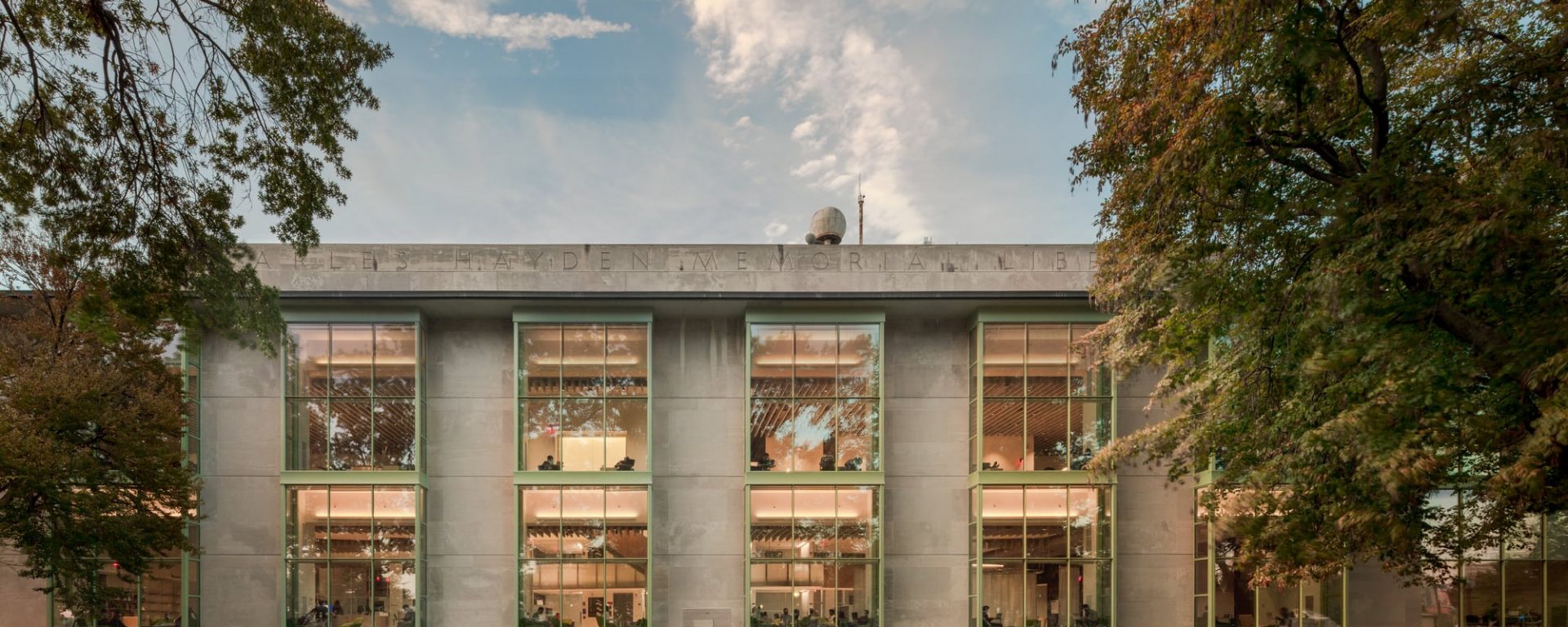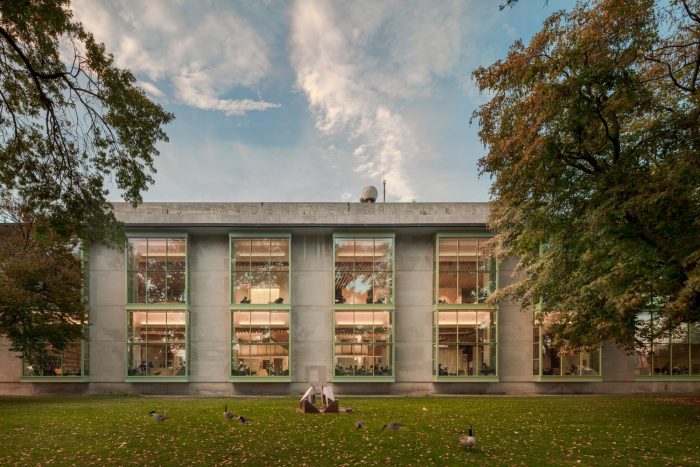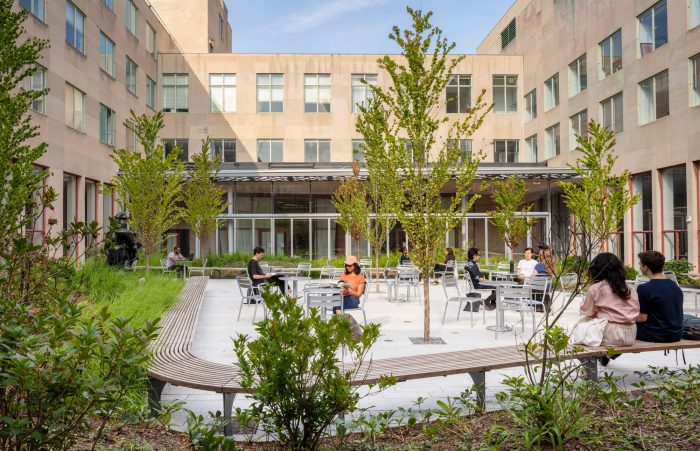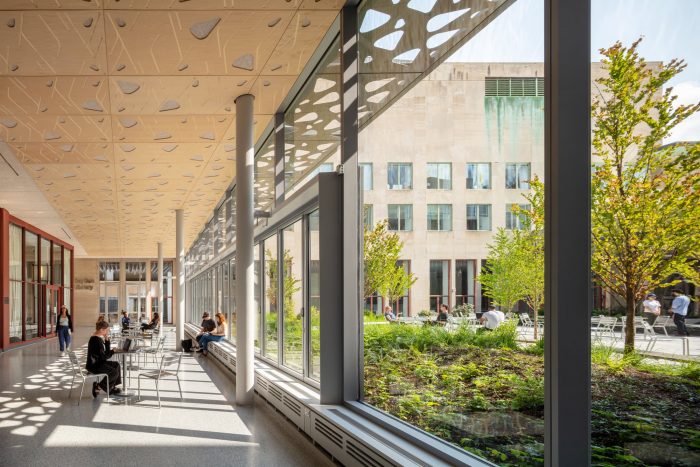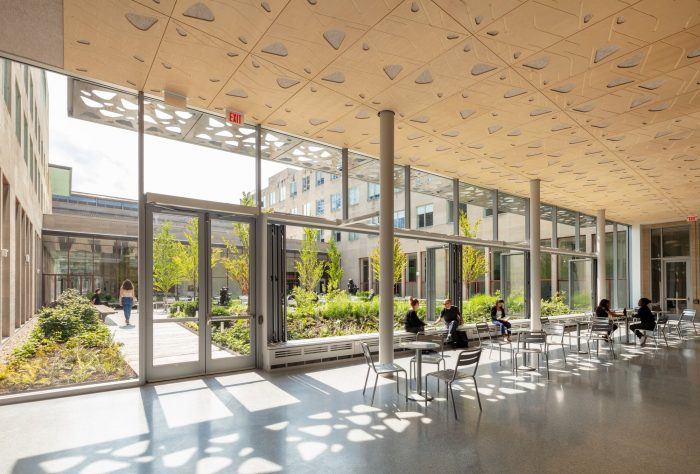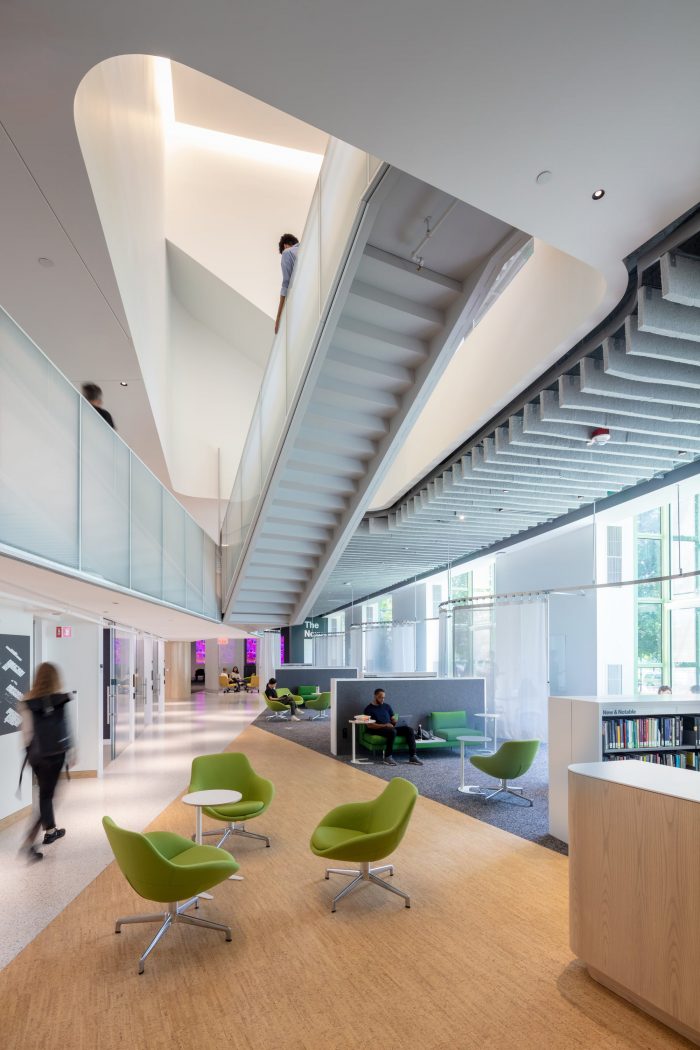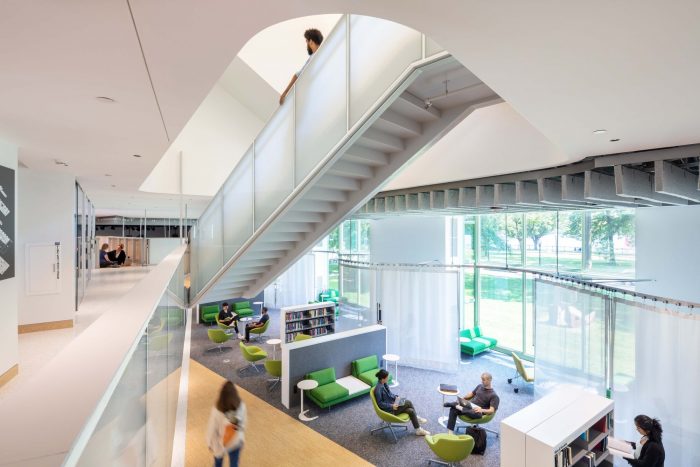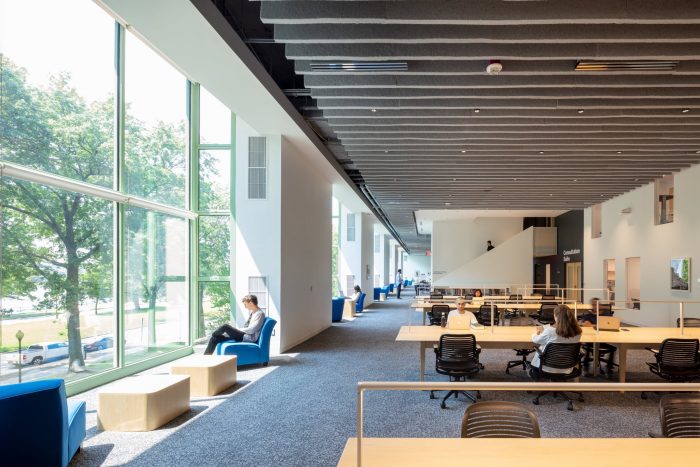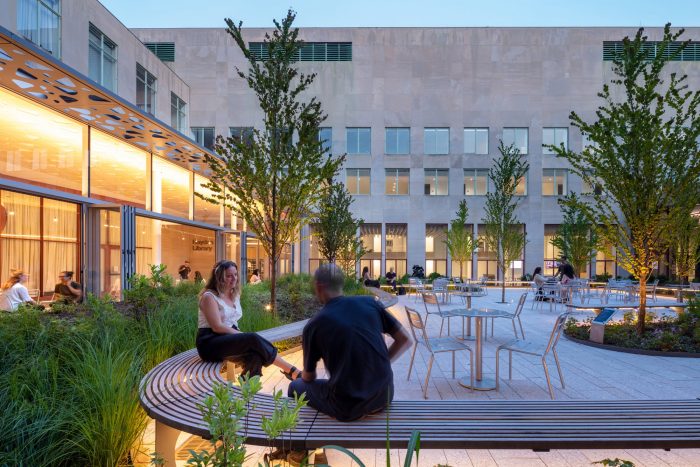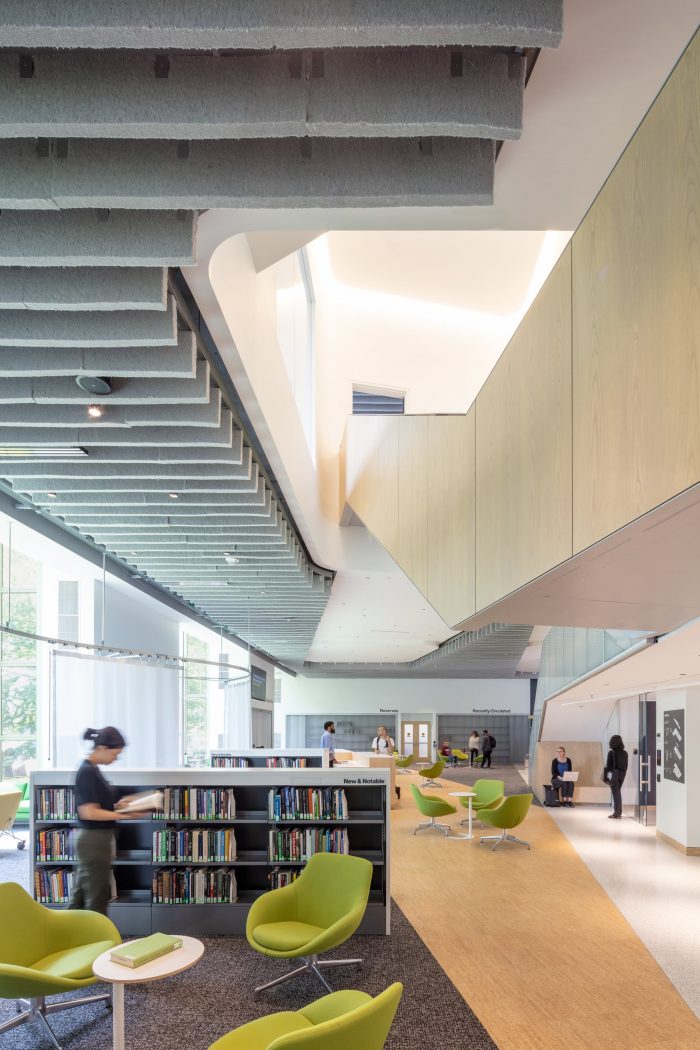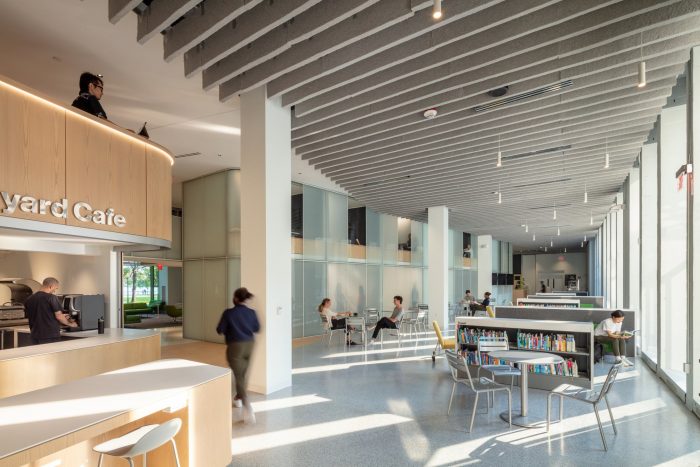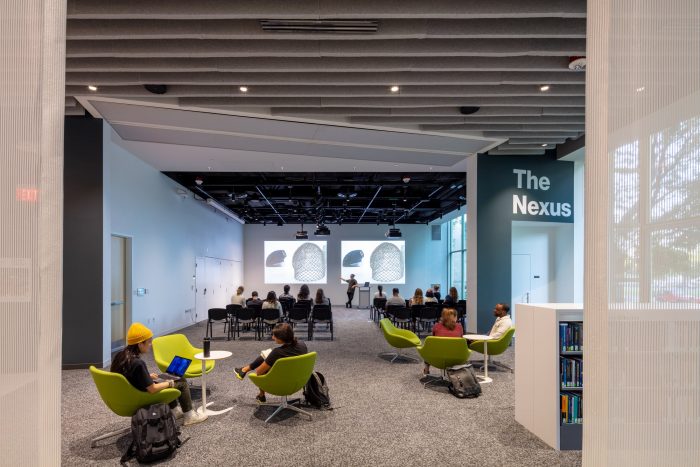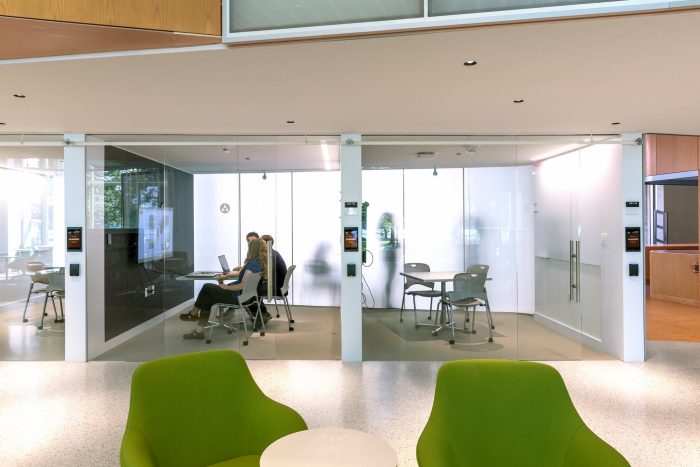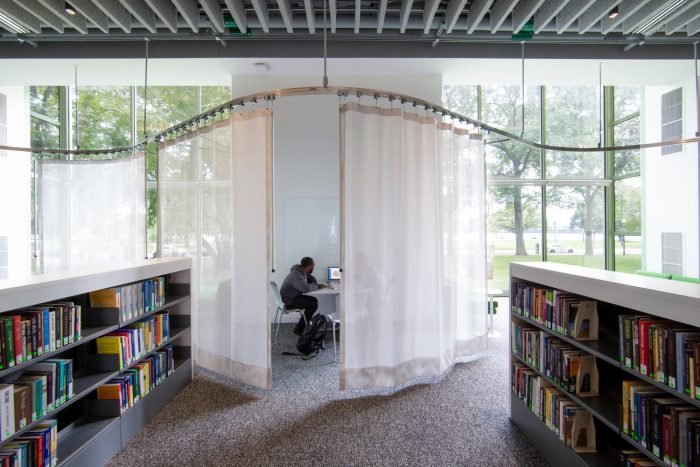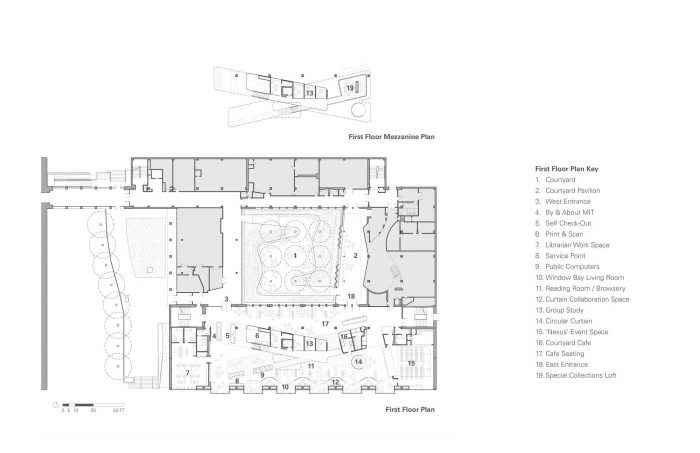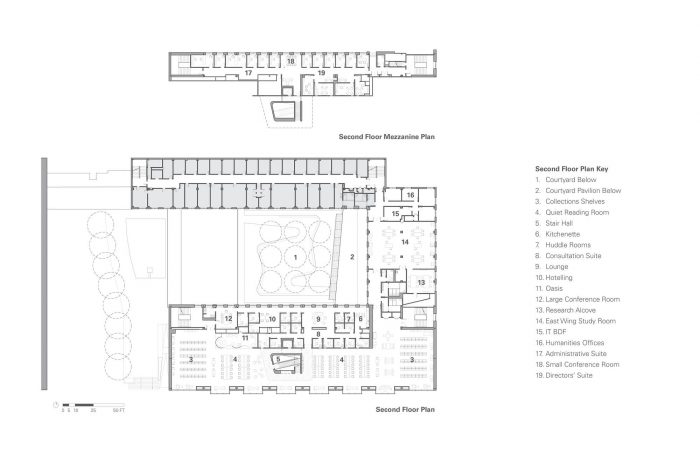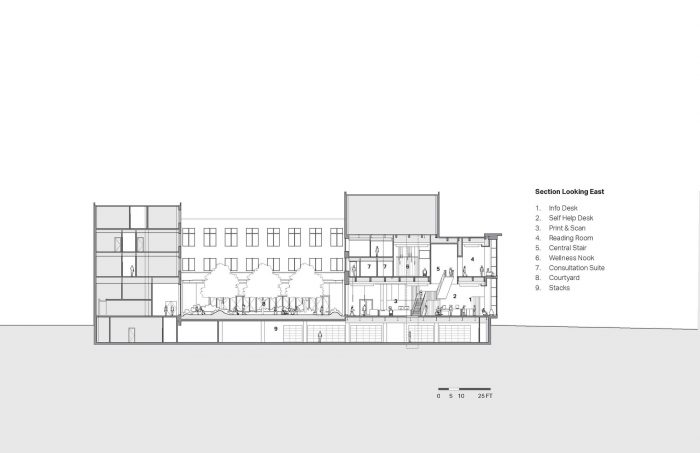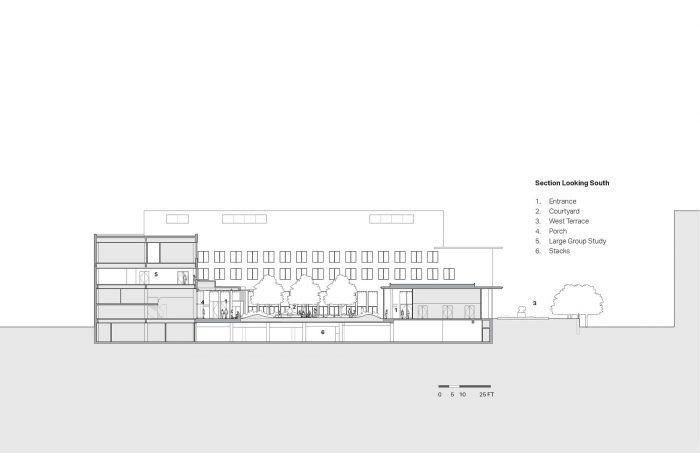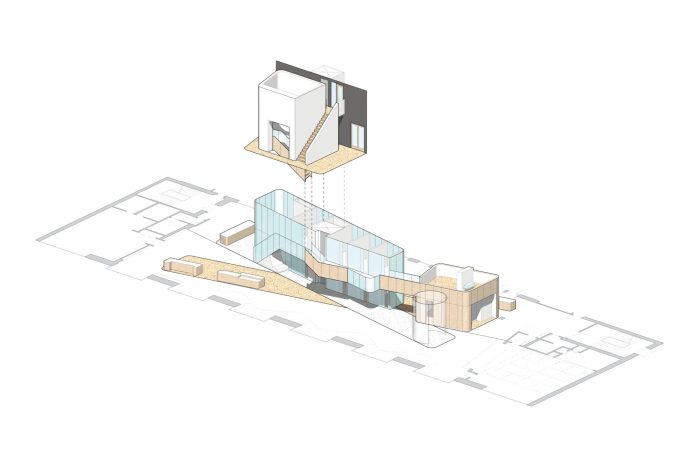麻省理工学院海登图书馆的重新设计将1951年的二战后的现代主义收藏库转变为一个充满活力和包容性的合作和创新研究的学习空间。研究十字路口 “的概念强调了在数字和模拟收藏和分析的交叉点上新思维模式的潜力。
The re-design of MIT’s Hayden Library transforms the 1951 modernist repository for post-WWII collections into a dynamic and inclusive learning space for collaboration and innovative research. The ‘Research Crossroads’ concept highlights the potential for new modes of thinking at the intersection of digital and analog collections and analysis.
一对两层楼的亭子–一个是玻璃的,一个是木头的–为原来的阅览室的无差别体量引入了一个调解的尺度。在亭子交叉的地方,一个新的雕塑楼梯和电梯建立了Z轴,突破了现有的楼板,提供了与所有楼层的直接垂直连接。
A pair of two-story pavilions—one glass and one wood—introduces a mediating scale into the undifferentiated volume of the original reading room. Where the pavilions cross, a new sculptural stair and elevator establish z-axis, breaking through an existing floor slab to provide a direct vertical connection to all levels.
24小时开放的底层包括一个咖啡馆和灵活的活动空间,以及数字协作室、私密的学习空间和数字工具,它们被安置在一个玻璃和木制的体积中。半透明的窗帘、数字屏幕、可移动的家具和白板鼓励学生 “入侵 “图书馆,重新配置空间以适应他们的需要。重新设计的二楼建立在现有的建筑优势之上,创造了一个休息、安静的空间,拥有优越的河流和天际线景观。
The 24-hour accessible ground floor includes a cafe and flexible event space as well as digital collaboration rooms, intimate study spaces, and digital tools housed in a glass and wood volumes. Translucent curtains, digital screens, movable furniture, and whiteboards encourage students to ‘hack’ the library, reconfiguring spaces to fit their needs. The reimagined second floor builds on existing building strengths to create a restful, quiet space with privileged river and skyline views.
重新设计的Lipchitz庭院–由于无法进入和暴露而被使用了几十年–建立了一个充满活力的中央绿化空间,并将图书馆的活动延伸到一个有遮蔽的、比例亲密的室内/室外空间,由自然植物、弯曲的木凳和精心布置的雕塑所包围。
The redesigned Lipchitz Courtyard—disused for decades due to inaccessibility and exposure — establishes a dynamic central green space and extends library activity out into a shaded and intimately scaled indoor/outdoor space, bounded by natural plantings, curving wood benches and carefully sited sculptures.
一个新的三个季节的亭子连接到庭院咖啡馆,并完成了一个围绕庭院的完全无障碍的回廊。定制铣制的木板结合了声学控制,并将院子里的桂花树树冠图案延伸到亭子的天花板上。
A new three-season pavilion connects to the Courtyard Café and completes a fully accessible cloister around the courtyard. Custom-milled wood panels incorporate acoustic control and extend the courtyard’s katsura tree canopy patterns across the pavilion ceiling.
Architects: Kennedy & Violich Architecture
Year : 2021
Photographs :John Horner
Manufacturers : Terrazzo & Marble
Landscape Architects : Stephen Stimson Associates
Structural Engineer : Buro Happold
Mechanical Engineers : Buro Happold
Lighting Design : Buro Happold
Sustainability : Thornton Tomasetti
Acoustics : Cavanaugh Tocci Associates
Civil Engineering : Haley & Aldrich
Contractors : Elaine Construction Company
Design Team : Sheila Kennedy FAIA, Design Principal Frano Violich FAIA, Managing Principal Ned Goodell AIA, Project Architect Ben Widger AIA, Daniel Sebaldt AIA, Nick Johnson, Hannah Liechty, Danniely Staback Rodriguez, Kevin Marblestone, Toshiki Niimi, Lynced Torres, Greta Wong, Jess Jorge, Chris Weaver, Mark Bavoso, Daniel Marshall, Clarence Lee, Julian Geltman
Client : Massachusetts Institute of Technology
Heating, Ventilation : Buro Happold
Building Envelope : Simpson Gumpertz & Heger
Code & Accessibility : Jensen Hughes
Audiovisual Design : Communications Design Associates
Cost Estimation : Vermeulens
City : Cambridge
Country : United States

